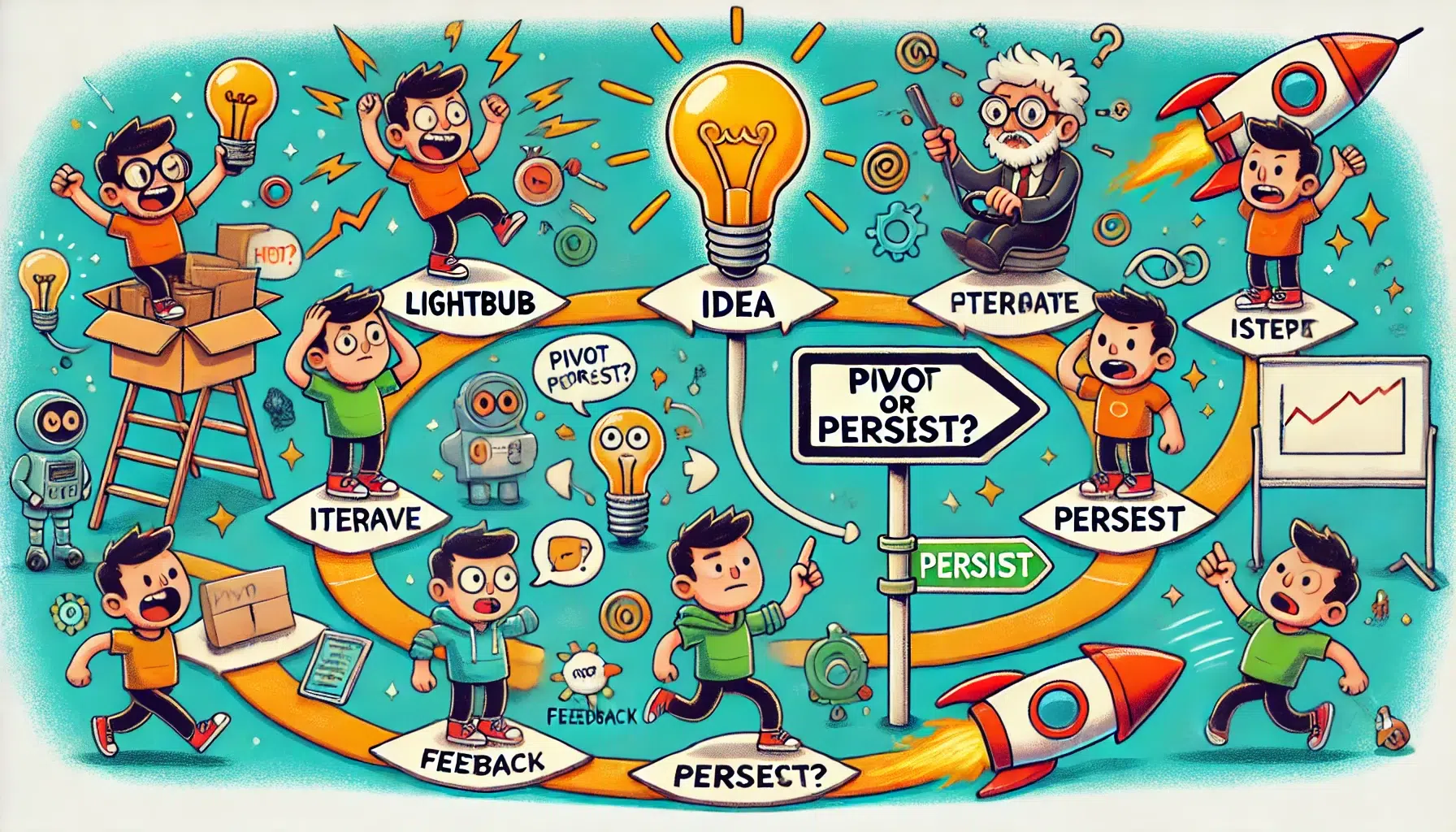
iterate to innovate: when to pivot and when to persist
welcome to the roller coaster ride of product management, where the only constant is change, and the route to success is anything but straightforward. in this high-stakes game, knowing when to pivot and when to persist can make all the difference. let’s explore the art of iteration and the delicate balance between sticking to your guns and making a sharp turn.
the thrill of iteration
iteration is the heartbeat of innovation. it’s about refining, tweaking, and constantly improving your product. think of it as a dance—sometimes graceful, sometimes frantic, but always in motion. each iteration brings you closer to a product that truly resonates with your users. but when do you keep dancing, and when do you change the tune?
signs it’s time to pivot
1. user feedback is consistently negative
if your users are repeatedly telling you your product isn’t hitting the mark, it’s time to listen. consistent negative feedback is a red flag that your current path might not be the right one.
2. market shifts
sometimes, the market throws a curveball. new technologies, emerging trends, or unexpected competitors can make your original idea obsolete. when the ground shifts beneath you, it might be time to pivot.
3. stagnant growth
if your user base isn’t growing despite your best efforts, you might need to reconsider your approach. stagnation can be a sign that your product isn’t as compelling as you thought.
4. team fatigue
when your team is burned out from trying to make a flawed product work, it’s a sign. passion and energy are essential for innovation. if those are waning, a pivot might reignite the spark.
when to persist
1. strong vision and belief
if you and your team have a strong vision and belief in your product, it’s worth pushing through the tough times. persistence often separates successful products from those that fizzle out.
2. positive core feedback
even if some aspects of your product aren’t working, if you’re getting positive feedback on the core features, it’s worth iterating on the weak spots rather than pivoting entirely.
3. incremental progress
progress, even if slow, is a good sign. if each iteration brings you closer to your goals, persistence might be the key to eventual success.
4. market validation
if you have evidence that there’s a market need for your product, persistence can pay off. market validation, whether through research or initial traction, is a strong indicator to keep going.
the art of the pivot
pivoting isn’t about admitting defeat; it’s about strategic redirection. when you decide to pivot, it’s essential to do it thoughtfully:
- assess the landscape: understand the market, your users, and your competition. what’s working? what’s not?
- set clear goals: define what you want to achieve with the pivot. clear objectives will guide your new direction.
- communicate clearly: ensure your team and stakeholders understand the reasons for the pivot and the new plan.
- iterate again: treat your pivot as a new iteration. be ready to test, learn, and adapt.
conclusion
in the world of product management, the line between pivoting and persisting is often blurred. the key is to stay flexible, listen to your users, and trust your instincts. whether you’re doubling down on your vision or making a bold new move, the journey of iteration will lead you to innovation. so, embrace the dance, and remember—success is often just one iteration away. happy iterating!




